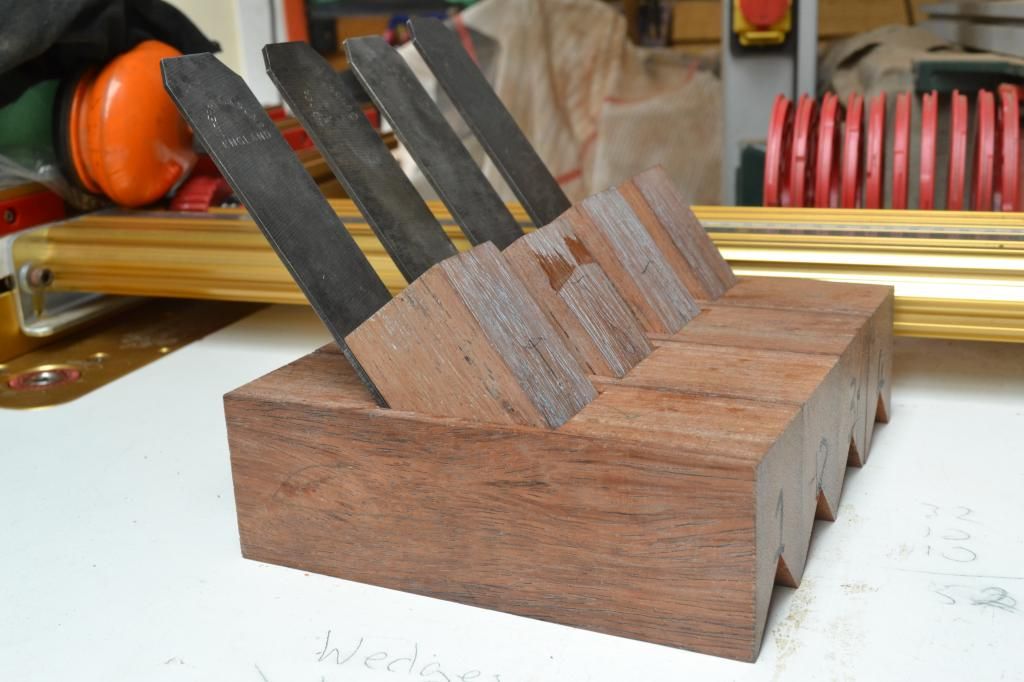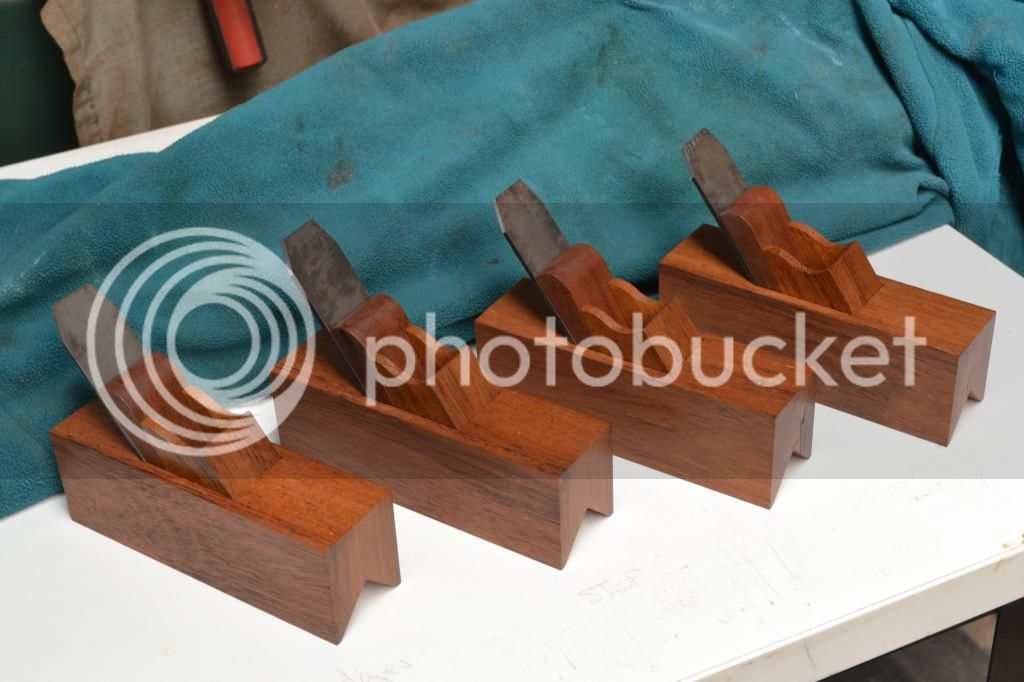Sheffield Tony
Ghost of the disenchanted
In case anyone wondered what got me trying out Liogier floats ... It was swagman's fault. I've been eyeing up chamfer planes for a while, and his post made me think to try making one.
This is my 4th go at making a plane, #1 was an attempt at a panel raising plane which had so many faults (including a nicely skewed bed, skewed the wrong way ), that it went in the woodburner. #2 was a scrub plane, which I still use a lot. This one is a more complicated thing. Because I have never actually set hand on one of these, only seen pictures, I hope I haven't made any howlers ...
), that it went in the woodburner. #2 was a scrub plane, which I still use a lot. This one is a more complicated thing. Because I have never actually set hand on one of these, only seen pictures, I hope I haven't made any howlers ...

I may have moved down south now, but In traditional Sheffield style, my maker's mark is a bit lop sided :lol: (
I used a brass sole held on by four countersunk screws with the heads filed down - a tip I picked up here. As a first shot, I've made the iron from O1 ground flat stock - I am rather hoping it stays put without a taper on it because that sounds like hard work to achieve, but if it doesn't hold securely I'll grind it down and fit a new wedge to suit.

This is my 4th go at making a plane, #1 was an attempt at a panel raising plane which had so many faults (including a nicely skewed bed, skewed the wrong way

I may have moved down south now, but In traditional Sheffield style, my maker's mark is a bit lop sided :lol: (
I used a brass sole held on by four countersunk screws with the heads filed down - a tip I picked up here. As a first shot, I've made the iron from O1 ground flat stock - I am rather hoping it stays put without a taper on it because that sounds like hard work to achieve, but if it doesn't hold securely I'll grind it down and fit a new wedge to suit.















